Going hiking is so much fun but it can also be burdensome, especially when you consider the load that you must walk with.
For example, hikers usually take along their tents so they can camp at night when needed. If you want to go hiking or camping for a long duration, you need to take your tent with you.
Read on to learn how to strap a tent to your backpack.
Table of Contents
Steps for How to Strap a Tent to a Backpack
Follow the steps and methods below to learn how you can strap your tent to your backpack:
1. Select the Right Size of Backpack and Tent
The first thing that you want to do is select a backpack that you can strap your tent to with ease. Also, select a tent that you (and your partner) can be comfortable in.
Make sure that the size of your backpack can accommodate the size of your tent. Check if your tent can fit into the frame of the backpack.
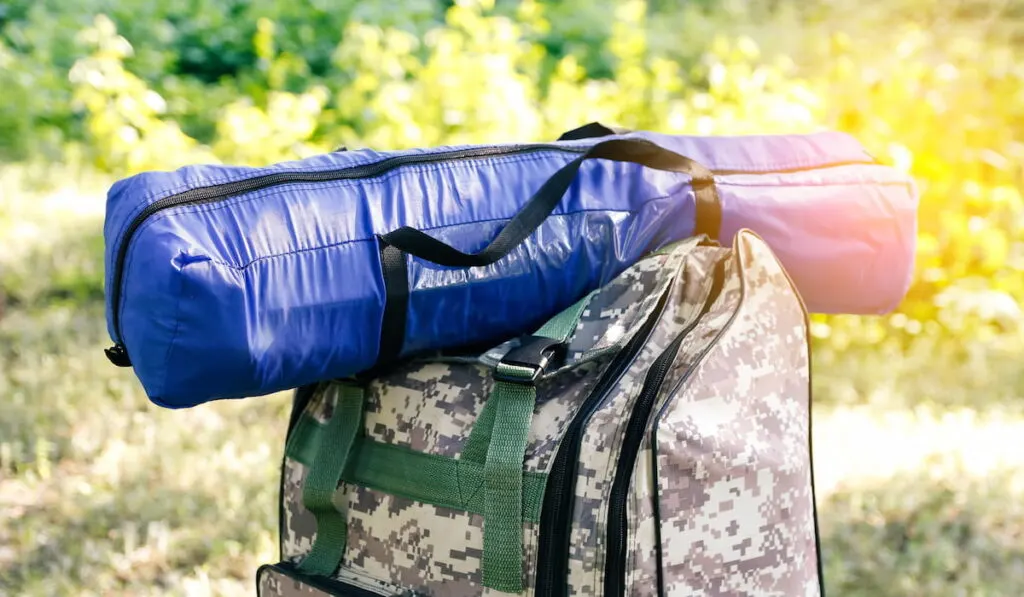
If the tent cannot fit into the backpack frame, you should go for a larger backpack or a smaller tent.
2. Know Where to Strap Your Tent
Will you be strapping your tent to an inner or outer frame on your backpack?
Please note that you need heavy objects on your backpack closer to your back so that your posture isn’t affected.
The closer the object is to you, the more stable you can be while walking.
You also need to consider where you are keeping your tent—between the top or bottom of your backpack.
You want to keep your tent strapped to the bottom of your backpack so that you can carry the backpack freely while walking.
3. Prepare the Tent for Strapping
Follow the steps below to prepare your tent for strapping:
- Keep it flat on the ground: You want to keep it flat on the ground so that no part is on top of the other. You should stretch the tent so that you can see every curve and edge.
- Roll the tent like a mat: Now start from one end and roll the tent just like you’d roll a mat. Roll it carefully so that you do not leave any space inside.
- Keep the tent in a tent bag: After rolling the tent, keep it in its bag. This is the bag that you will strap to your backpack.
And now, it is time to strap the tent to your backpack.
4. Keep the Tent on the Backpack
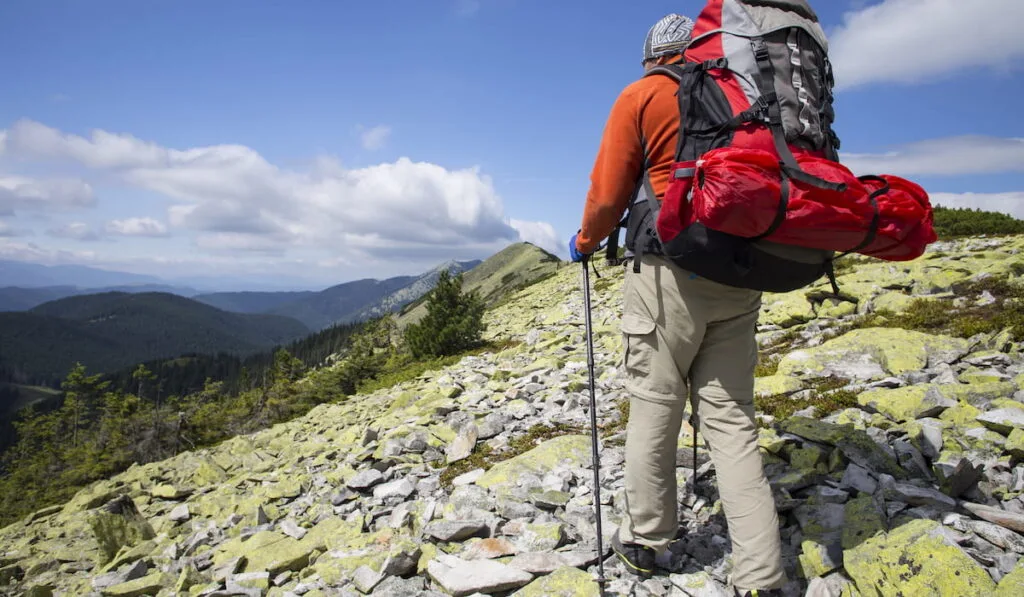
Remember that the weight of the tent determines where you keep it in the backpack. Heavier objects need to go down below.
If you have a sleeping bag in the backpack, you want to keep the tent very close to it as they usually have similar weights.
After determining the best spot for the tent, place it there and follow the next step.
5. Use a Quality Rope to Strap the Tent
Many backpacks come with close-looped ties to easily strap the tent and other items on them.
However, if your backpack does not come with such ties, you want to get a quality rope or cord that will not cut easily to tie the tent to the backpack.
If your backpack is one with an outer frame, you have to reinforce it with the rope so that the chances of your tent falling will reduce.
To get a quality rope or tent, go to the nearest hardware store or buy it online.
With the rope, you can strap the tent to the backpack. Congrats as your tent is now strapped on and you are ready to start your journey.
However, continue reading on for some considerations.
6. Consider The Weight of the Backpack
Remember that the weight of your backpack determines how often you will need to rest and how far you can walk.
To enjoy your trip, you need a light backpack.
Later in this article, we will discuss many ways you can make your backpack lighter.

7. Consider Sharing Your Load
If you are hiking or camping with someone, you may want to share your load with them so that the backpack will be easier for you to carry.
One of you can carry the sleeping bags while the other carries the tent. With two backpacks, your journey will be easier and as hikers, you can reach more destinations.
Now you know how to strap your tent to a backpack. Well, what type of backpack should you use? One with an inner frame or one with an outer frame? Continue reading.
Inner Frame or Outer Frame Backpacks? Which Is Better for Strapping Tents To?
Some people suggest strapping your tent to a backpack with an inner frame. However, others suggest that you should use a backpack with an outer frame.
Here are some tips to help you make the right choice:
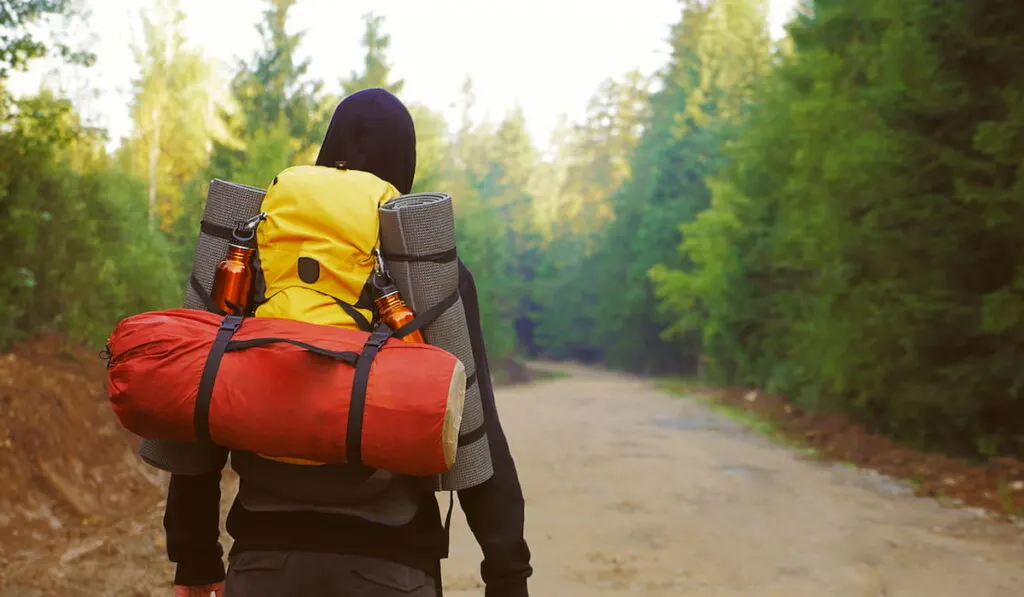
Consider the Weight and Your Spine
Remember that heavier objects should go closer to your spine while lighter objects should go farther away.
Your tent is heavy, a backpack with an inner frame is best so that the tent can go very close to you.
Consider the Space in the Bag
The space in the backpack also matters because it determines the distance between your back and the tent if you choose a backpack with an outer frame.
If the backpack is not too spacious inside, you can opt for one with an outer frame if you like.
Environmental Elements:
Remember that rain, sun, and other environmental factors can reach your tent if you strap it to an outer frame.
Tree branches and twigs can also scratch the tent bag. This means that the tent is safer when you keep it in an inner frame.
Your Tent Falling Off
Your tent is more likely to fall off when strapped to a backpack with an outer frame than one with an inner frame. Just make sure that you strap it properly.
Tent Being Out Is Easy to Collect and Set Up
One pro of using a backpack with an outer frame is that you can easily collect and set up the tent without much stress. If you like, someone can collect the tent from your backpack without taking it off first.
Now you’ve chosen the right backpack for your tent. Continue reading to learn some tips on backpacking.
Some Tips for Backpacking
Here are some tips to help you with backpacking so that you can hike and camp with minimum effort:
Go for Lighter Equipment
Remember that you may be walking with a backpack for a long time.
You need to make sure that the backpack is as lightweight as possible and there is no better way to do this than to use lighter equipment.
Make sure that you go for lighter tents, sleeping bags, and other things that will be in your backpack.
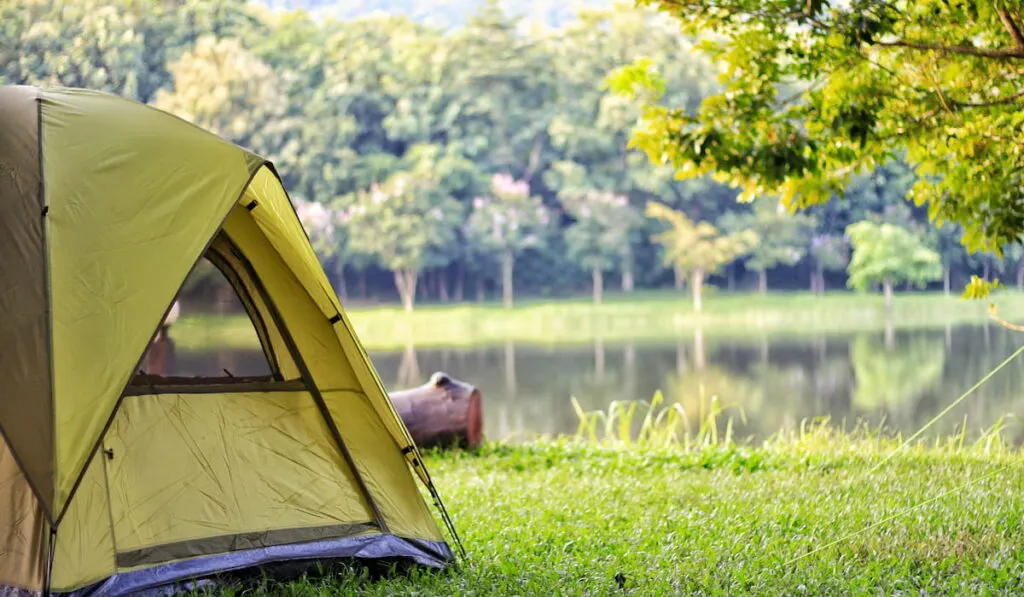
Pack Only a Dry Tent
If you want a lighter tent, make sure that it is dry first before you pack it.
Also, you want to use a waterproof tent bag so that the rain will not drip into the tent. A dry tent is lighter and very easy to carry, unlike a wet one. Also, dry tents are easier to set and fold.
Disassemble the Tent if Possible
If you can disassemble your tent, you have solved more than half of your tent problems.
A disassembled tent with many parts is easier to carry as you can keep the heavier parts closer to you while you keep the lighter parts far away.
Also, you can share the load with someone. When searching for a tent to buy, go for the ones that you can disassemble.
Know the Limit of Weight that You Can Carry
It is usually advisable to carry only backpacks that are not heavier than a third of your weight so that you do not get spinal injuries.
Well, just make sure that you only carry a backpack that you feel comfortable with while walking.
Do Not Forget Other Essentials
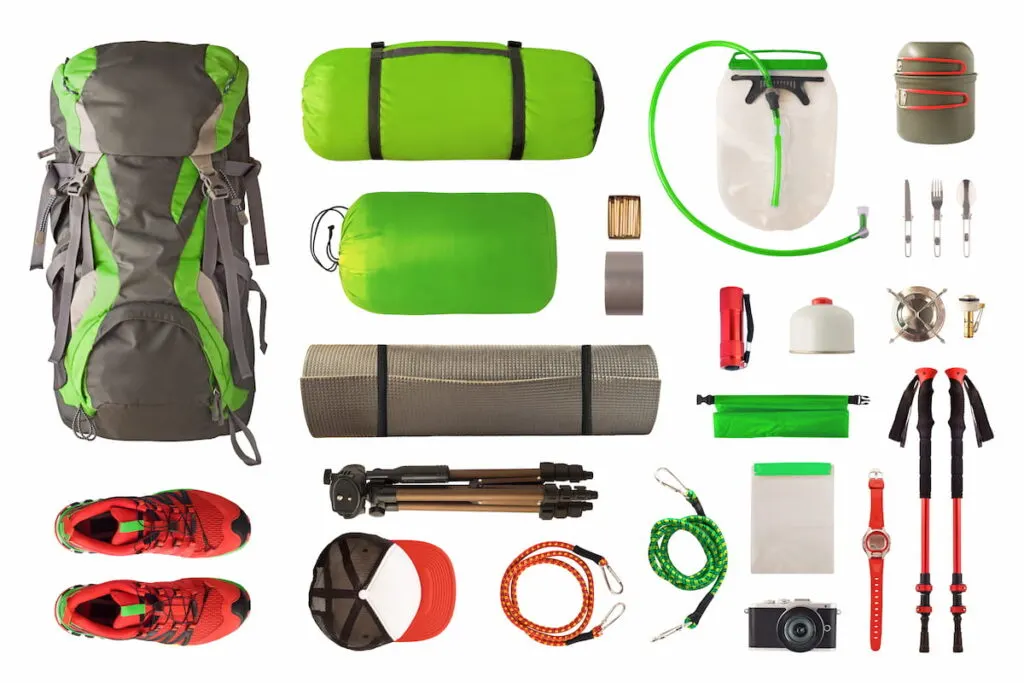
Even though you want to think about how you can carry the tent to your camp, you also do not want to forget other hiking and camping essentials such as food, pots and a kettle, clothes, an ax or blades, a map, GPS, and sleeping bags.
Make sure that you keep everything in a good position in the backpack.
Items that you will use often such as a map or GPS should stay on top of the backpack so that you can reach them quickly.
Use a Compression Bag
A compression bag is simply one with straps that you can use to compress the items that you can keep in the bag.
Your goal is to reduce the size of items such as the tent and sleeping bag so that they can make way for other smaller items that you’d love to travel with.
Do Not Walk for Long with a Heavy Backpack
No matter the size of the backpack that you use, please find a way to rest along your way so that you do not get injured with a strained spine or back.
Always rest and make sure that you only carry a backpack that is not too heavy for you.
Now you are ready for your hiking and camping journey.
Final Thoughts
You do not need to worry about strapping a tent to your backpack after reading the useful steps and methods in this article.
For a stress-free trip, make sure that you use the easy tips listed above. Do enjoy your journey.

